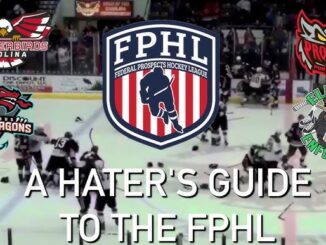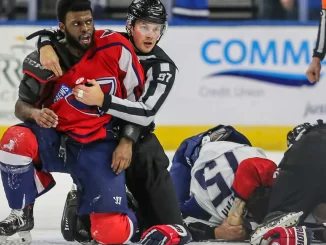In a surprising turn of events, the captain of an AHL team has announced the termination of a contract with the ECHL, sending shockwaves through the hockey community. The decision, which comes after much speculation, highlights a range of issues that have become increasingly prominent in the evolving landscape of professional ice hockey.
The captain, whose leadership and skills on the ice have been instrumental for the team, cited concerns about player development and organizational alignment as the primary reasons for this abrupt decision. In a statement, he expressed disappointment with the current state of collaboration between the two leagues, emphasizing that the synergy once promised has failed to materialize.
One of the major factors leading to the termination is the perception that the ECHL’s current structure does not adequately support player advancement. Many AHL players, particularly those looking to make a name for themselves, rely on opportunities within the ECHL to gain valuable experience and showcase their talents. However, the captain noted that the lack of resources and competitive play in the ECHL has made it increasingly difficult for AHL players to thrive. “It’s crucial for us to be in an environment that fosters growth and allows us to push our limits,” he stated.
Additionally, the captain mentioned communication issues between the two leagues that have left many players feeling uncertain about their development paths. The promise of a clear pipeline for talent transfer has been muddied by inconsistent policies and an unclear vision for collaboration. This has led to frustration among players, coaches, and management alike, as they navigate the complexities of moving between leagues.
The decision to terminate the deal is not just a personal one; it reflects broader sentiments within the team and the league. Many players share the captain’s concerns, believing that a more cohesive partnership is necessary to enhance the overall player experience. This sentiment has resonated in locker rooms and boardrooms, where discussions about league dynamics have been heating up.
Furthermore, this situation raises questions about the future relationship between the AHL and ECHL. Both leagues have historically maintained a symbiotic relationship, with the ECHL serving as a developmental ground for AHL talent. However, if issues surrounding player development and organizational support persist, this relationship may require a reevaluation. Fans, too, have expressed their worries, with many taking to social media to voice their concerns about the potential implications for player talent and competitive balance in both leagues.
The captain’s decision also underscores the importance of player advocacy in professional sports. As players gain more influence over their careers and the environments they operate in, they are increasingly willing to take a stand on issues that affect their development and well-being. This marks a shift in how players view their roles within the league structure, emphasizing the need for transparency and support from league executives.
Looking ahead, it remains to be seen what this decision will mean for the AHL team and its roster. The captain’s leadership will be tested as the team navigates this transition, and the impact on team morale and performance could be significant. Players will need to rally together and focus on their goals as they adapt to the changing circumstances.
In conclusion, the termination of the deal with the ECHL by the AHL team captain marks a pivotal moment in the landscape of professional ice hockey. It reflects growing concerns about player development, communication, and the overall relationship between leagues. As players advocate for their futures, the hope is that both the AHL and ECHL will take these concerns seriously and work towards a more collaborative and supportive framework. The hockey community will be watching closely as this situation unfolds, eager to see how it shapes the future of the sport.



Be the first to comment